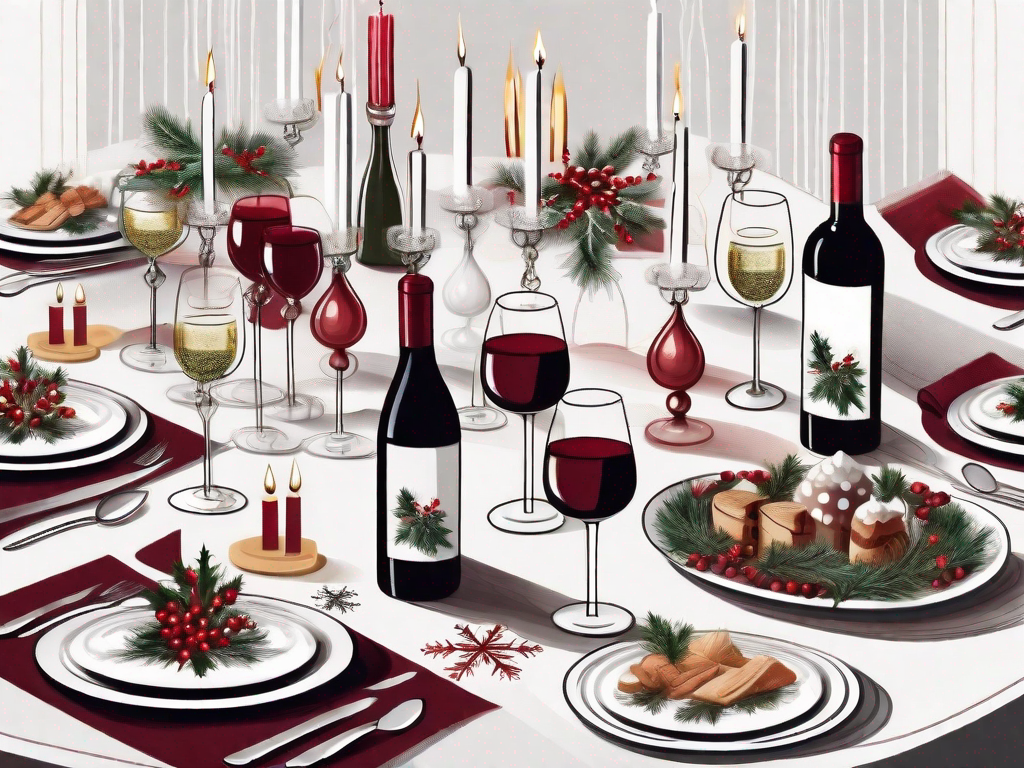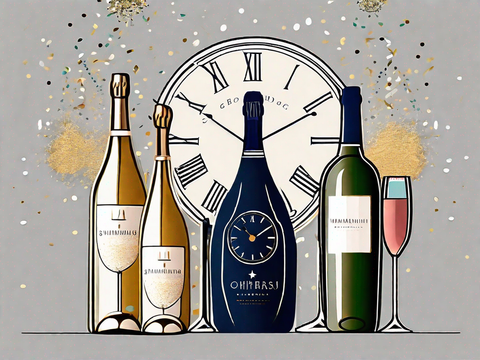
Wine tasting parties are a great way to enjoy the holiday season with friends and family in the comfort of your own home. Hosting a holiday-themed wine tasting party can be a fun and unique way to explore different wines and expand your palate. In this article, we will guide you through the process of planning and hosting a wine tasting party, including tips on selection, themes, and food pairings.
Understanding the Basics of Wine Tasting
Before diving into the details of hosting a wine tasting party, it is important to have a basic understanding of wine tasting. Wine tasting is not just about sipping and enjoying the flavors, but it is also an art that requires careful observation and analysis. Here are a few key aspects to keep in mind:
When it comes to the world of wine, there is a whole universe of flavors, aromas, and textures waiting to be explored. Wine tasting is a sensory experience that involves using your sight, smell, and taste to evaluate the wine. It is a journey of discovery, where each sip reveals a new layer of complexity and character.
Let's start with the appearance of the wine. When assessing a wine's appearance, pay attention to its clarity and color. Hold the glass against a white background and observe if there are any sediments or cloudiness. The color of the wine can give you hints about its age and grape variety. Reds can range from pale ruby to deep purple, while whites can vary from pale straw to golden yellow.
Now, let's move on to the aroma. Swirl the wine gently in your glass to release its bouquet. Take a moment to inhale deeply and try to identify the different scents that waft up to your nose. You might detect the fruity aromas of berries, citrus, or tropical fruits. There could also be hints of spices like cinnamon, cloves, or black pepper. If the wine has been aged in oak barrels, you might pick up notes of vanilla, caramel, or toasted nuts.
Once you have explored the wine's aromas, it's time to taste. Take a small sip and let the wine coat your palate. Pay attention to the flavors that unfold on your tongue. Is it fruity, with hints of berries or stone fruits? Or is it more earthy, with notes of mushrooms or truffles? Notice the balance between sweetness, acidity, and bitterness. Is the wine refreshing and crisp, or rich and velvety?
As you savor the wine, also pay attention to its structure. Does it have a light or full body? Are the tannins soft and smooth, or firm and grippy? Tannins are compounds found in grape skins and seeds that give the wine a drying sensation in your mouth. They contribute to the wine's structure and ability to age. The acidity of the wine is another important element to consider. It provides freshness and liveliness to the wine, balancing out the sweetness and enhancing the flavors.
Understanding wine tasting terminology is key to describing and discussing wines accurately. Familiarize yourself with terms such as tannins, acidity, body, and finish. Tannins are responsible for the astringent or puckering sensation in your mouth, while acidity adds brightness and liveliness to the wine. Body refers to the weight and texture of the wine, ranging from light to full-bodied. The finish is the lingering taste and sensation that remains after you swallow the wine.
By developing your wine tasting skills, you can enhance your appreciation for the artistry and craftsmanship that goes into winemaking. It allows you to delve deeper into the world of wine, discovering new flavors, regions, and grape varieties. So, the next time you raise a glass, take a moment to truly experience and savor the wine, for it is a journey of the senses that can transport you to vineyards around the world.
Planning Your Holiday-Themed Wine Tasting Party
Now that you have a basic understanding of wine tasting, it's time to plan your holiday-themed wine tasting party. Here are a few important considerations:
Choosing the Right Date and Time
Select a date and time that works for both you and your guests. Consider weekends or evenings when everyone is likely to be available. Ideally, plan your party a few weeks in advance to give guests ample time to RSVP and make arrangements to attend.
Invitations and Guest List Considerations
Create festive invitations that reflect the holiday theme of your party and send them out to your guest list. When putting together your guest list, consider inviting a mix of both wine enthusiasts and those who are new to wine tasting. This will create a dynamic atmosphere and encourage engaging conversations throughout the event.
Selecting the Perfect Wines for Your Party
Choosing the right wines for your wine tasting party is crucial. Here are a few tips to help you make the perfect selection:
Understanding Wine Varieties
Consider selecting wines from different wine varieties, such as Chardonnay, Cabernet Sauvignon, Pinot Noir, and Sauvignon Blanc. This will allow your guests to experience a range of flavors and styles.
Holiday Wines: What to Look For
Embrace the holiday spirit by including wines that are traditionally associated with the season, such as sparkling wines, rich reds, and dessert wines. Look for options that complement the flavors and aromas of holiday foods.
Deciding on a Theme for Your Wine Tasting Party
Having a theme for your wine tasting party can add an extra element of excitement and intrigue. Consider the following options:
Popular Wine Tasting Themes
Popular themes for wine tasting parties include regional tastings, where you focus on wines from a specific region, or varietal tastings, where you explore different wines made from the same grape variety. This allows guests to learn about specific regions or grape varieties in a fun and interactive way.
Creating a Unique Theme
If you want to get creative, you can create a unique theme based on the holiday season. For example, you could have a "spice and everything nice" theme, where guests bring wines with warm spices or wines that pair well with holiday spices.
Food Pairings for Your Wine Tasting Party
Pairing food with wine is an essential part of any wine tasting party. Here are a few principles to guide you:
Basic Principles of Wine and Food Pairing
As a general rule, match lighter wines with lighter foods and heavier wines with heartier dishes. Consider the flavors, textures, and acidity levels of both the wine and the food when making pairings. For example, a crisp Sauvignon Blanc pairs well with fresh seafood, while a rich Cabernet Sauvignon complements juicy grilled steaks.
Holiday Foods and Their Wine Counterparts
Pairing wine with holiday foods requires a delicate balance. For roast turkey, a dry white wine like Chardonnay or a fruity Pinot Noir can be excellent choices. If you're serving ham, consider a slightly sweet Riesling or a bold Zinfandel to complement the flavors. For desserts, select a sweet wine like a late-harvest Riesling or a sparkling Moscato to end the evening on a high note.
With these tips on wine selection, themes, and food pairings, you are now equipped to host a memorable holiday-themed wine tasting party at home. Remember to enjoy the process, explore new wines, and create lasting memories with your loved ones. Cheers!



